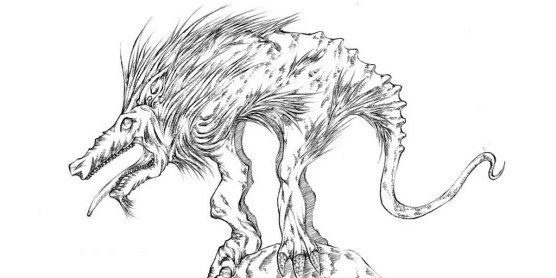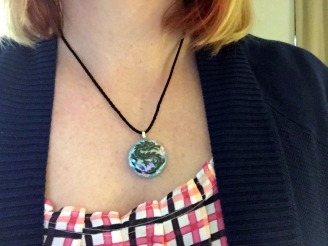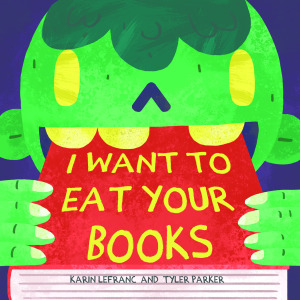We are physical beings who experience life on this planet through our five senses. It’s true that our minds love to time-travel, pulling us out of the present moment, to worry about something we said in the past or to look forward to something about to happen in the future. Our characters, like us, do the same thing in their internal dialogue, which is good because it makes them real.
But the reader must also feel them living and breathing in the real world. Not only does this make your character more real, but it engages the reader by making them experience the same sensations. If your character smells burnt brownies or he chooses bubblegum mouthwash at the dentist, we don’t intellectually absorb that, we feel it with your character.
I struggle with this, too, because I don’t want my characters stuck in a sensory deprivation tank. I think it’s about feeling our way into our character’s body and environment, and not overthinking it. Some call it getting into the zone or entering a trance like a shaman writer. The physical experience of being on a subway is very different from the waiting room at the spa. The air, the light, the smells, the sounds and even the tastes are different. But it’s even deeper than that, because the subway is different in the morning rush hour from late at night, and the zen spa is very different from the one at the mall.
The more mindful we are in our daily lives, the more we can bring that mindful experience to our writing. This means noticing how our bodies react to the physical world around us. Sometimes it’s easy to go for the standby descriptions, but if we tap into what we really, really feel, then our writing becomes more authentic, and our readers will feel it.
Feeling Your Words
Instead of waking up with “bleary eyes,” we can bring own unique experience of waking up tired. How do our eyes feel? Are they scratchy or is the skin around your eyes tight?
The next time something scares you, notice: what happens in your body? Instead of the usual “heart racing” and “shiver ran down spine,” you can bring your own unique experience. Does your body clamp tight like a drawbridge? Does your hair prickle on the back of your neck or on your forearms? Does your heart pound, hammer, race, thud, pulse or beat in some other way?
Seeing Your Words
With visual descriptions, it’s about picking out the one or two things that stand out and are most important for us to understand the character or setting or whatever it is you’re describing. The reader can imagine the rest.
I loved Joanne Harris’s #TenTweetsAboutColour, in which she says, “In fiction, the objective is not so much to describe the color accurately, as to convey a feeling to the reader.” We can describe the “blue sky” with any other synonym for blue, from azure to indigo to slate, but doing so is more clever than evocative. Instead, she suggests linking colors with a feeling or a sensation. She says: So: “ice-white” conveys something different to “milk-white,” or “bone-white,” or “moon-white,” or “ash-white.” Often even these color descriptions can become cliche, so we can add a feeling to the color like “blameless blue sky.”
And, of course, the same can be done with eyes. Instead of “piercing blue eyes” or “sparkling eyes,” try something different, depending on the feeling you’re trying to evoke. Are they “arctic blue eyes” or “forget-me-not blue” or “Hollywood-blue eyes”?
Hearing Your Words
This can also be applied to sound from a character’s voice to the sound of the wind through the trees. When you’re away from your desk, notice the timbre and tone of different voices, and if the sound of the wind is different blowing through the birch tree compared to the oak tree.
Smelling Your Words
Smell is our oldest sense. “Even a single cell animal has ways to detect the chemical composition of the environment,” according a researcher at Columbia University. Smell is such an evocative sense and brings the reader more quickly into your world than perhaps any other sense. You can describe a smell as acrid, sour, sharp, cloying, or you can evoke a feeling with it, like flowery, comforting, or repulsive.
Her skin smelled like chlorine from the pool.
The subway air was damp with the scent of humans, which neither their stringent deodorants or perfumed shampoos could hide.
Tasting Your Words
When I was a children’s yoga teacher, I would do a mindful eating exercise in which each child would get a raisin. They would observe it, smell it, touch it, listen to it as they shook it in their hand. They would share what they experienced through each of these senses. Then they put the raisin in their mouth, feeling it first before biting into it. I would ask them if they tasted anything? Where on the tongue do they taste it? Is it sweet? Grapey? Sour? Do they chew it one side or both sides? How long is it chewy for? Does the taste linger? You get the point. I don’t think we have to go into this much mindfulness every time we eat, but if we can bring a little noticing, it will enrich our writing! Sorry, couldn’t resist.
With that I give you all permission to go eat and smell and taste and hear and feel the world!
 for a new baby or young child. Adults love them as much as children, maybe even more so! Some examples include: The Wonderful Things You’ll Be, All the World, and On the Night You Were Born.
for a new baby or young child. Adults love them as much as children, maybe even more so! Some examples include: The Wonderful Things You’ll Be, All the World, and On the Night You Were Born.


 popular things and mash them together. Kids love these, too, because they’re unexpected, and they break the rules and that’s pretty exciting stuff. Plus, they are usually packed with a big splat of humor. Examples include: Dragons Love Tacos, Dear Santasaurus, Pirosaurs, and Dinotrux.
popular things and mash them together. Kids love these, too, because they’re unexpected, and they break the rules and that’s pretty exciting stuff. Plus, they are usually packed with a big splat of humor. Examples include: Dragons Love Tacos, Dear Santasaurus, Pirosaurs, and Dinotrux.









